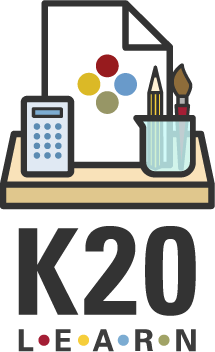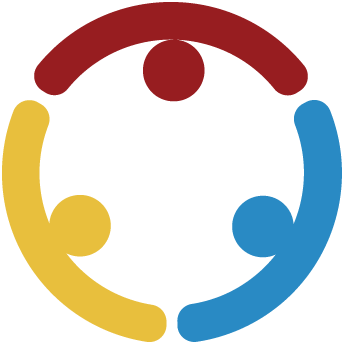Summary
In this profession learning session, participants explore careers in their communities by mapping local resources and designing career-focused activities based on career clusters. Participants will also identify how students gather information about careers and career opportunities. At the end of the lesson, participants will reflect on their learning and examine how they can enhance career exploration opportunities for their students.
Essential Questions
How are students learning about careers?
What community connections can you make to help engage students in careers?
Snapshot
Engage
Participants use prior knowledge of careers and career clusters to discuss careers in their communities.
Explore
Participants identify where students get information about careers and create a visual representation of community resources near their school(s).
Explain
Participants investigate different career exploration activities in LEARN and consider which activities would benefit their students.
Extend
Participants design a career exploration activity for their students focused on exploring a career cluster or specific career.
Evaluate
Participants reflect on their learning by identifying key points from the session and any remaining questions.
Materials List
Presentation Slides (attached)
Career Cards (attached; one page per 14 participants)
Career Posters (attached; one set per session)
Career KWL Chart handout (attached; one per participant)
Community Ecosystem Model handout (attached; one per participant)
Examining the Resources handout (attached; one per participant)
Career Exploration Events handout (attached; one per group)
Designing an Activity handout (attached; one per group)
Sticky notes
Learning Objectives
Identify resources in your community to support student career needs.
Design an activity around career clusters or a specific career.
Engage
5 Minute(s)
Use the attached Presentation Slides to guide the session. Display slide 2 and introduce the session to participants. Move through slides 3–4 to share the essential questions and learning objectives.
Pass out one Career Card to each participant. Display slide 5 and have each participant read their career card then stand next to the Career Poster that represents the career cluster their career card belongs to. Have each participant share the career on their card with others around the same poster.
Move to slide 6 and have participants discuss the questions on the slide in their small career cluster groups. Once participants have had enough time to discuss, have them return to their seat, keeping their career card.
Explore
10 Minute(s)
Pass out one copy of the Career KWL Chart handout to each participant. The handout is a modified version of the KWHL Graphic Organizer instructional strategy. Display slide 7 and have participants consider the sections of the chart in the context of their school(s). Have them fill out the first two columns using what they know about their students. Assist participants in thinking about the types of careers their students would be interested in. Encourage them to use the Career Posters to guide their thinking.
Give each participant one copy of the Community Ecosystem Model handout. Display slide 8. Have participants use the questions on the slide to consider the resources available to students in their community. Display slide 9 to show participants what they should write in their Community Ecosystem Models. Have participants fill in the circles on their handouts with different resources, adding on additional circles and drawing connecting lines between resources as needed.
Explain
20 Minute(s)
Give each participant one copy of the Examining the Resources handout and one copy of the Career Exploration Events handout.
Move to slide 10 and introduce the Exclaim and Question instructional strategy. Tell participants that they should review different career exploration resources and consider how these resources could be used in their schools. Have participants look at the Career Café, Zoom Into Your Career, and College2Career Forum Educator Resources in LEARN. As they read each one, have them record the purpose, something they like (exclaim), and something they have a question about for each resource on their Examining the Resources handouts.
Extend
20 Minute(s)
Pass out one copy of the Designing an Activity handout to each participant. Transition to slide 11 and explain that participants should work with others from their own schools to design an activity based on the career clusters discussed in the session. Have participants complete the handout by answering the questions and describing their activities in as much detail as possible.
Evaluate
10 Minute(s)
Pass out a sticky note to each participant. Transition to slide 12 and introduce participants to the Aha! Huh? Uh uh. instructional strategy. Direct participants’ attention to their Career KWL Charts. Explain to participants that they should reflect on the session by writing one thing that stood out to them, one thing they still have questions about, and one thing they found troubling.
Research Rationale
Through continuous research, it is becoming increasingly evident that simply telling students about PSI opportunities or career fields isn’t enough. Teachers need to give students impactful, relatable, and engaging experiences so that students can actively explore their options. Not only do these experiences help students explore future opportunities, but they can also lead to career success later in life. Research shows a strong correlation between job shadowing and workplace visits as a teen and career success later in life. One study found that Canadian students who made a workplace visit by age 15 were 4% less likely to be NEET (Not being in Education, Employment, or Training) than their peers at age 25 (Covacevich et al., 2021).
Secondary school is essential in developing a student's life, interests, future career, and educational trajectory. Students often use their personalities and interests to help form career decision-making skills throughout their lives, but these become more prominent in secondary education as students approach adulthood. Personality traits “influence career adaptation by facilitating, or deterring, behavioral performances” (Lent & Brown, 2013, p. 563). By connecting personality traits and interests, students begin to build self-efficacy in career decision-making as they are more confident in engaging in career exploration (Lent et al., 2016). This connection increases an individual’s environmental fit and “level of congruence” within an organization (Zainudin et al., 2020, p. 884). One study of 4,834 secondary-aged students aimed to gauge the helpfulness of career talks in the students’ schools (Kashefpakdel & Percy, 2017). The study showed that 2,660 students (55%) rated participation in career talks quite helpful, while 1,196 students (24.7%) rated the talk very helpful (Kashefpakdel & Percy, 2017).
Activities such as the College2Career Forum, Career Café, Zoom Into Your Career, and Career Expos assist students in determining if postsecondary education would be an appropriate avenue to achieve their goals and can lead to well-informed college and career choices. College offers students an opportunity to build relationships with mentors and peers that will benefit them throughout their careers (Campbell et al., 2012). College graduates tend to have more job satisfaction, jobs that offer a greater sense of accomplishment, more independence and opportunities for creativity, and more social interactions in their jobs than non-college graduates (Oreopoulos & Petronijevic, 2013). College graduates have an increased chance of employment. College helps students develop skills that prepare them for careers in the tech-driven economy, including non-routine, abstract skills that aid in problem-solving, multitasking, and creativity (Oreopoulos & Petronijevic, 2013).
Resources
Campbell, C. M., Smith, M., Dugan, J. P., & Komives, S. R. (2012). Mentors and college student leadership outcomes: The importance of position and process. The Review of Higher Education, 35(4), 595–625.
Covacevich, C., Mann, A., Santos, C., & Champaud, J. (2021). Indicators of teenage career readiness: An analysis of longitudinal data from eight countries (Working Paper No. 258). OEC Education. https://www.oecd.org/en/publications/indicators-of-teenage-career-readiness_cec854f8-en.html
Kashefpakdel, E. T., & Percy, C. (2017). Career education that works: An economic analysis using the British Cohort Study. Journal of Education & Work, 30(3), 217–234.
K20 Center. (n.d.). Aha! Huh? Uh uh. Strategies. https://learn.k20center.ou.edu/strategy/4414
K20 Center. (n.d.). Exclaim and question. Strategies. https://learn.k20center.ou.edu/strategy/94
K20 Center. (n.d.). KWHL graphic organizer. Strategies. https://learn.k20center.ou.edu/strategy/127
Lent, R., & Brown, S. (2013). Social cognitive model of career self-management: Toward a unifying view of adaptive career behavior across the life span. Journal of Counseling Psychology, 60(4), 557–568.
Lent, R. W., Ezeofor, I., Morrison, M. A., Penn, L. T., & Ireland, G. W. (2016). Applying the social cognitive model of career self-management to career exploration and decision-making. Journal of Vocational Behavior, 93(1), 47–57.
Oreopoulos, P., & Petronijevic, U. (2013). Making college worth it: A review of the returns to higher education. The Future of Children, 23(1), 41–65).
Zainudin, Z. N., Wei Rong, L., Mohamad Nor, A., Mohamad Yusop, Y., & Wan Othman, W. N. (2020). The relationship of Holland theory in career decision making: A systematic review of literature. Journal of Critical Reviews, 7(9), 884–892.


